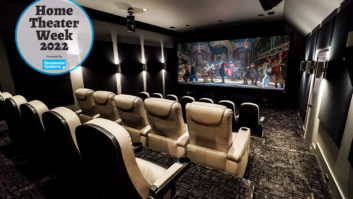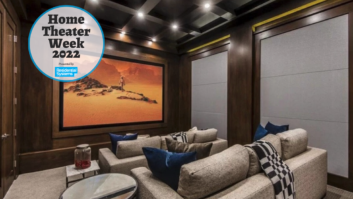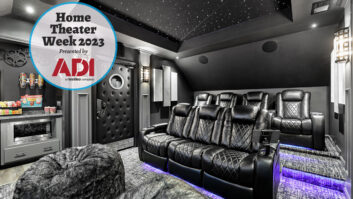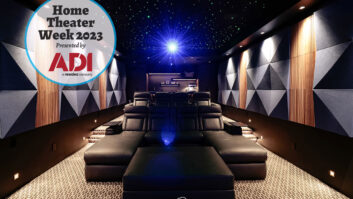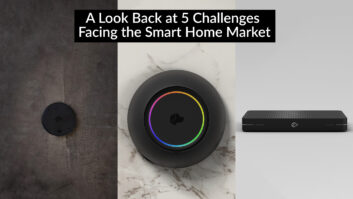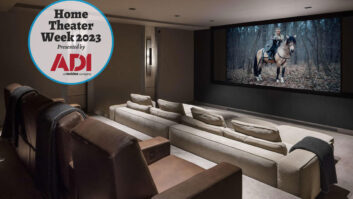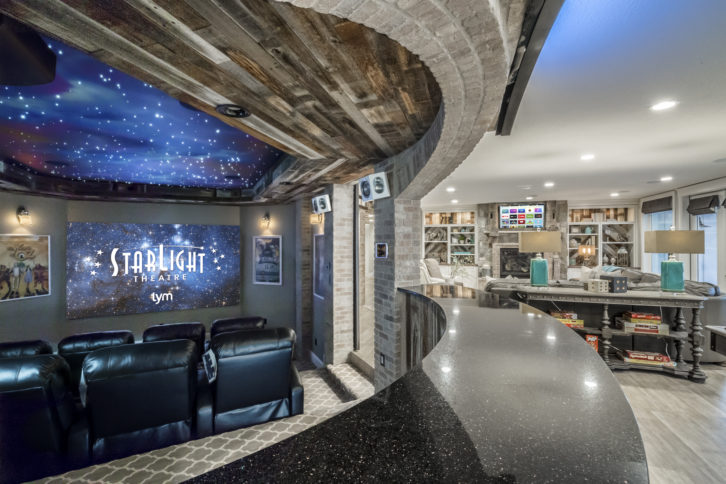
Dedicated home theaters had seemed to be leading a long, slow death over the past few years as multipurpose media rooms overtook them as the preferred place to consume content. It made sense for a lot of people who may not have had the spaces or the finances to dedicate an entire room to the pasttime. But consumers’ love affair with multifunctional media rooms may be fading, as families reconsider setting aside a room where the only thing on the agenda is pure AV bliss.
Certainly, the pandemic and its subsequent lockdowns probably had something to do with consumers’ renewed interest in owning a home theater. There was a lot of time to consume content and realize that maybe their current AV setups were lacking or that the viewing environment was subpar. “The pandemic definitely lit a fire, but there are other trends moving the needle,” says Paul Erickson, a senior analyst at Parks Associates. Factors like better content, better technology, and better designs — combined with smaller price tags — are influencing consumers to take a good hard look at home theaters, and presenting new opportunities for home systems integrators.
1. Streaming Content Cultivates a New Audience of Home Theater Customers
In the past, high-quality, first-run content could only be enjoyed by either going to the cinema, investing in expensive AV components, or paying for a premium streaming subscription. People with modest incomes typically chose the first option, making dedicated home theaters a luxury item afforded by a very small, exclusive market. This has all changed now that Hollywood has chosen to release movies to streaming services first — and without an upcharge. Consumers are now privy to the same great movie-making normally reserved for a cinematic debut, and it’s wet their whistles for something far better to enjoy it on at home. “With Hollywood continually pushing first-run movies and limited series to homes through mass market streaming services, consumers have naturally started to feel like they should be watching in a more theater-like setting,” says Brad Montgomery, creative director at TYM Home Theater Design Division. “Home cinema, through streaming, had become a tangible amenity to the average person, and at the same time it’s given a lift to sales of home theater equipment,” echoes Erickson. “Consumers are ready to part with their mediocre speakers, small displays, and other equipment and pay for something that will give them a bigger, better picture and sound to get the full effect of 4K, high-res cinematic content.”
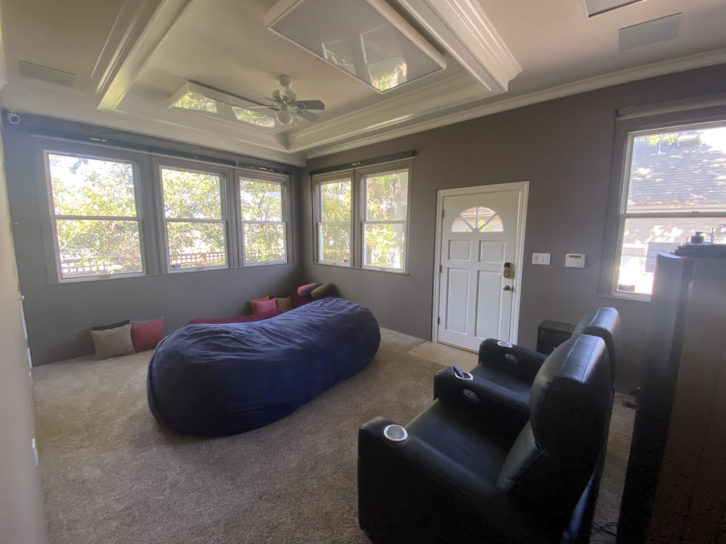
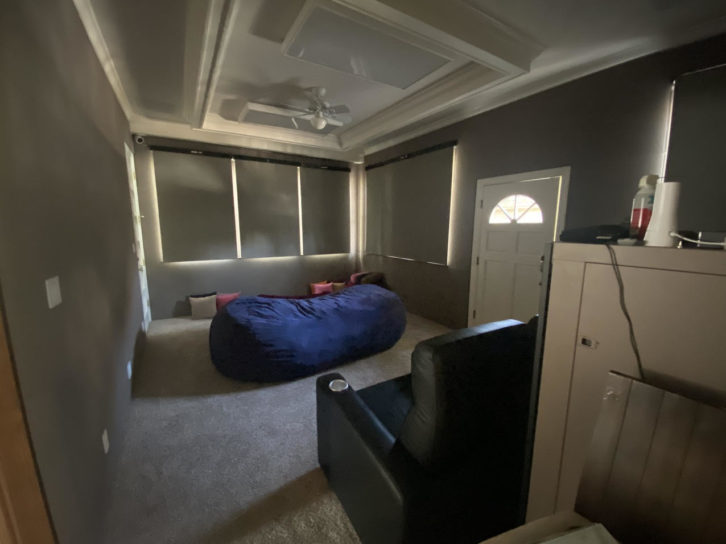
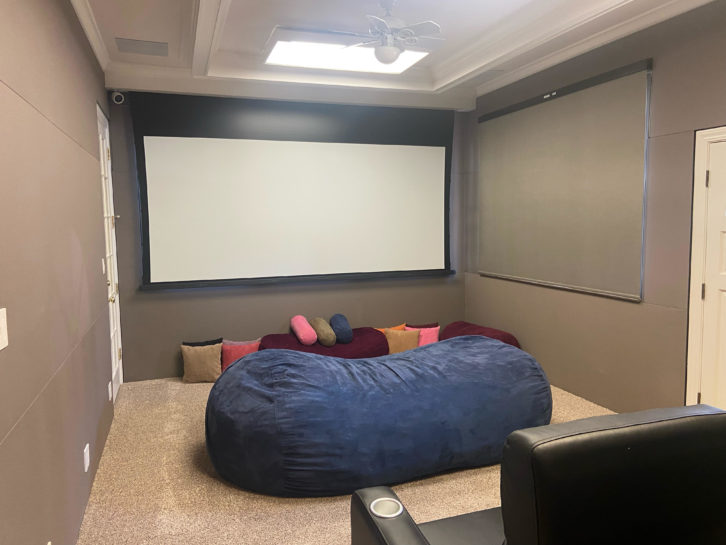
2. “Adaptable” Technology Broadens the Market
While high-quality Hollywood-produced content has sparked an increased interest in home theater, technology is making it possible for more people to actually add one to their homes. Thanks to ambient light rejecting screens, short-throw projectors, architecturally friendly Dolby Atmos systems, large LED screens, and motorized window treatments, nearly any room can function admirably as a home theater. “There was a time when there were multiple inhibitors — the room is too bright, the space is too small, the speakers won’t fit — to having a home theater, but not anymore,” Montgomery remarks. Ambient light rejecting screens paired with laser projectors or LED video walls, for example, can present bright, vivid images during the day and even in rooms with exposed windows. Motorized window coverings enhance the picture even more. Short-throw-projectors, meanwhile, bring movie magic to condos and other small spaces. And new designs in Dolby Atmos speakers enable lifelike audio to exist where it may have otherwise been impossible. “These new technologies, combined with lower equipment prices, have opened up the home theater market immensely,” says Erickson.
Also by Lisa Montgomery: Forging Successful Builder Partnerships
3. Integration Rules the Home Theater Roost
Consumers have embraced voice as a simple means of control, and this naturally dovetails into the home theater. That’s not to say that AV systems should be controlled solely by voice — although consumers would likely love it — but rather, there’s an innate expectation that home theaters should be as easy to operate as asking Alexa to recite the weather forecast. Integration, consequently, has become a fundamental facet of the home theater environment. “Integration isn’t even a topic of discussion with our customers anymore,” says Derek Flikkema, senior technology advisor at SAV Digital Environments. “They just assume that it will be a part of the complete home theater package.” Adds Montgomery, “Consumers now more than ever understand that if a theater is too complicated to operate, the experience suffers. We have come to the point in our business when we say ‘no’ to clients’ requests for certain products if we know they won’t seamlessly interoperate with the control system.”
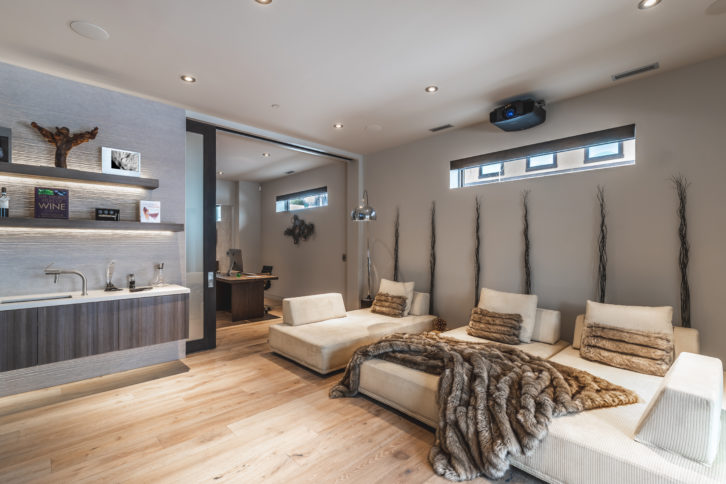
4. “Lounging” in Comfort and Style
You can outfit a dedicated home theater with the best equipment, convenient access to an amazing array of top-quality content, and intuitive, effortless control, but if the room isn’t comfortable, it’s a big swing and miss. Today, style and comfort go hand-in-hand, exemplified by a noticeable shift in preferred seating styles. Individual cinema-style seating has fallen by the wayside, replaced by sophisticated lounge-style seating. “We’re seeing a movement toward more contemporary looks, with simple, clean lines,” says Gordon van Zuiden, owner of cyberManor. Not only has there been a shift in home theater design, but a willingness by consumers to pay for it. Noticing the growing importance consumers were placing on design, TYM Homes recently changed the focus of its business from installation to design. “Resonating strongly with our clients are ‘casual chic’ designs resembling what you’d see at a nice cocktail lounge,” Montgomery says. “The gold-leaf of palatial theaters has been replaced with colored LED lighting, illustrating that what hasn’t gone out of style are decorative touches that make a home theater look and feel like a special destination.”
Related: Top 10 Home Theater Design Trends
5. Networking Pushes the Boundaries of the Home Theater
Most people who’ve been working and learning from home now understand the importance of a solid, stable, reliable network. They also recognize how a network needs to support the bandwidth demands of streaming audio and video content. It should come as no surprise, then, that network wiring is trending hard in home theaters. Affecting everything from the quality of the content, the performance of the equipment, and the ease of control, quality wiring has gained its due respect in home theaters. Plus, as the popularity of outdoor entertainment space continues to grow, having a network on which to share AV content to ancillary entertainment areas broadens the appeal of a dedicated theater. Unlike the “old days” when the home theater was the holy grail of home entertainment, it’s become a space that folds in nicely with the rest of the house, and where comfort, cosmetics, content, and performance come together to redefine the home theater marketplace.
Best-Selling Home Theater Gear
The PowerHouse Alliance distributor members report the following categories as the best-selling home theater product categories:
- Video (TV)
- Audio Receivers
- Networking Gear (Streaming)
- Remotes
- Speakers
- Mounting Equipment/Racks
